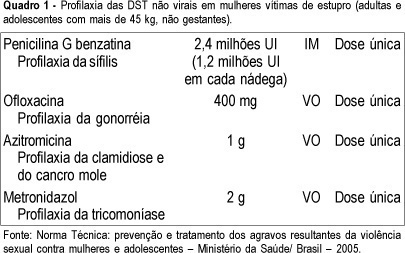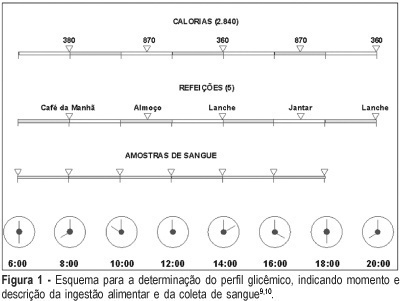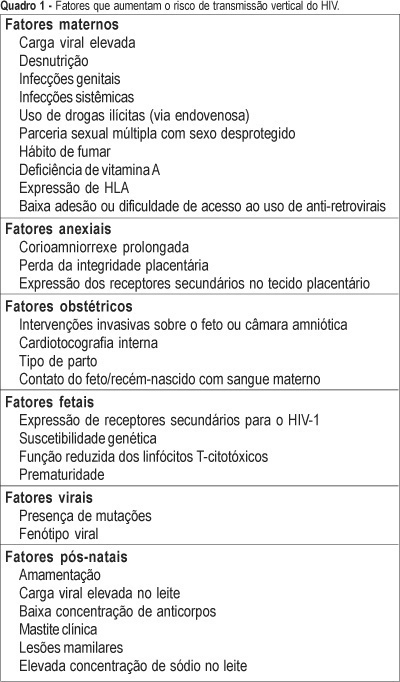Summary
Revista Brasileira de Ginecologia e Obstetrícia. 2006;28(2):126-135
DOI 10.1590/S0100-72032006000200009
Gender-based violence is related to the power imbalance between men and women that is present, to a greater or lesser degree, in all societies. It was recognized as a human rights problem by the UN relatively recently. It includes emotional, physical and sexual violence. Sexual violence is the extreme form of gender violence, usually accompanied by the other types of violence. Its prevalence is difficult to determine, but it most probably affects at least one third of women some time in their life. It has multiple consequences to women's physical and gynecological health, which depends in great part on the quality of the care the woman received immediately after the assault. Unfortunately, most emergency health services, including those in women's hospitals, are rarely prepared to provide the correct care for these women. Care should be multidisciplinary and involves crisis treatment, meticulous clinical examination with complementary auxiliary methods, treatment of physical lesions, prevention of pregnancy and of sexually transmitted infections and AIDS, and follow-up for at least six months after the aggression.

Summary
Revista Brasileira de Ginecologia e Obstetrícia. 2006;28(1):54-62
DOI 10.1590/S0100-72032006000100010
Female lower urinary tract symptoms are nonspecific and a clinical evaluation is required to establish the correct diagnosis. Such evaluation should consist of a structured micturition history or questionnaire, physical examination, micturition diary, pad test, and urodynamic evaluation. Urodynamic investigation was developed as an extension of patient history and physical examination in order to reveal the etiology of the patient's complaints. The goal of the present article is to review clinical and subsidiary diagnosis of urinary incontinence.
Summary
Revista Brasileira de Ginecologia e Obstetrícia. 2005;27(12):768-778
DOI 10.1590/S0100-72032005001200010
Knowledge about the factors or situations that influence the vertical transmission (VT) of human immunodeficiency type 1 (HIV-1) has led to the implementation of strategies which have promoted a rate decline along the years, from 40% to less than 3% nowadays. One of the major advances in the area has been the prophylactic administration of zidovudine (AZT), in the prenatal phase (oral route), in the predelivery phase (intravenous route) and to the newborn (oral route). This intervention may reduce HIV-1 VT 68%, thus being the most effective isolated strategy used so far. In the chronological sequence of advances, it has been observed that a high viral load is the main risk indicator for this type of transmission. As AZT does not reduce the viral load and does not control the residual rate observed in HIV-1 VT, the use of prophylactic schemes using three antiretroviral drugs has been encouraged. Elective caesarean section completes the range of obstetric strategies with major impact on the reduction of HIV-1 VT. Its effectiveness is linked to the observation of the criteria for its indication: viral load assessed after the 34th week of pregnancy with levels over 1000 copies/mL, gestation over 38 weeks confirmed by ultrasonography, intact chorioamniotic membranes, and performed before labor has started. In cases where normal delivery is indicated, it should be remembered that prolonged chorioamniorrhexis, invasive manipulation of the fetus, delivery with instruments and episiotomy are situations to be avoided. Among the postnatal interventions considered important for the reduction of HIV-1 VT are: pediatric reception (this should be done by trained professionals, avoiding microtraumas in the mucosa during the sucking maneuvers, use of neonatal AZT (for a period of six weeks) and bottle feeding. Special attention should be given to the orientation for the mother, in order to prevent acute infection by HIV-1 in this period, what would markedly increase virus VT rate.

Summary
Revista Brasileira de Ginecologia e Obstetrícia. 2005;27(12):759-767
DOI 10.1590/S0100-72032005001200009
PURPOSE: to carry out a literature review to evaluate the impact of assisted reproductive techniques (ART) on maternal and perinatal morbidity. METHODS: specialized data bases such as SCI and MEDLINE were used to identify studies related to the terms: "in vitro fertilization", "assisted reproduction" and "reproductive techniques" in combination with "morbidity", "maternal mortality", "perinatal mortality", and "neonatal mortality". RESULTS: data from published studies allow us to conclude that maternal morbidity is related to an increase in the number of multiple pregnancies. In addition, some studies have reported an increased incidence of pregnancy-induced hypertension and gestational diabetes. Specialized multidisciplinary prenatal care has been recommended to obtain optimal results. An increase in the number of multiple pregnancies considerably increases maternal, fetal and neonatal complications. There is also evidence of an increase in congenital malformations. The particular characteristics of this group of women and the different techniques of assisted reproduction, particularly ICSI, in the etiology of congenital defects were discussed, but no clear differences have been established between the various procedures. Some recent metanalyses show that the number of fetal malformations in infants born as a result of ICSI is greater than in spontaneously conceived infants, but not more frequent than in those born as a result of other ART. There is no consensus regarding whether this fact is a result of the procedure itself, of manipulation of the gametes, ovulation induction, if it is due to the fact that these couples are infertile or a result of the time they take to become pregnant. Few studies have carried out a prolonged, consistent and systematic evaluation of the perinatal evolution of infants born following the use of frozen embryos. CONCLUSIONS: with respect to fetal malformations, there is definitely a higher incidence rate among infants born as a result of ART compared to those conceived naturally (RR: 1.4-2.0; 95% CI: 1.3-2.7). Insufficient time and data do not yet permit analysis of the outcome of pregnancies resulting from the use of frozen embryos. It is not clear whether these findings are due to the characteristics of the couples who are submitted to these procedures or to the peculiarities of each method. Many of the problems related to maternal and perinatal morbidity are due to the significant number of multiple pregnancies originating from ART. More studies are required in order to clarify these aspects of human reproduction.
Summary
Revista Brasileira de Ginecologia e Obstetrícia. 2005;27(11):691-697
DOI 10.1590/S0100-72032005001100010
This is both a synthesis and a review of the major research findings, with the aim of validating Rudge's group IB. In this group of pregnants, screening for gestational diabetes was positive while the diagnosis was negative (normal 100 g-oral glucose tolerance test 100 g-OGTT). Nonetheless, the variations in glucose levels observed throughout the day, and confirmed by the glycemic profile (GP), characterized diurnal hyperglycemia, which accounts for maternal risk and adverse perinatal outcome. The description of this group is unique for both the establishment of the diagnosis during gestation and the follow-up of both the mother and the infant. These pregnancies have been erroneously classified as "low risk" and have not been diagnosed or treated. The IB group corresponds to 13.8% of the pregnant women screened in our service. This rate, added to the 7% of pregnancies complicated by diabetes, increase the occurrence of hyperglycemic disorders during gestation to up to 20.0%. In Rudge's group IB: a) perinatal mortality rate is 41‰, which is similar to that observed among diabetic pregnant women and 10 times higher than that found among non-diabetics; b) the observed placental abnormalities (both morphological and functional) differed from those seen in non-diabetic and diabetic pregnant women, indicating an adjustment to maintain functional activities that facilitated the passage of glucose to the fetus and explained fetal macrosomia (53.8% in non-treated pregnancies); c) maternal risk for hypertension, obesity and hyperglycemia was high and seemed to reproduce a model of metabolic syndrome, favoring the potential risk for future diabetes; d) 10 years after the index-pregnancy, type 2 diabetes was confirmed in 16.7% of the women in group IB. The authors suggest the development of multicentric studies in order to identify biomarkers specific for Rudge's group IB and establish protocols for the diagnosis of gestational hyperglycemic disorders using the combination GP + 100g-GTT as a standard. This procedure may cause an impact on the morbidity/mortality rate among pregnancies complicated by diurnal hyperglycemia.

Summary
Revista Brasileira de Ginecologia e Obstetrícia. 2005;27(11):698-705
DOI 10.1590/S0100-72032005001100011
One of the most important advances in the control of the spread of infection with type 1 human immunodeficiency virus (HIV-1) occurred within the context of vertical transmission (VT), with a reduction from levels of more than 40% to levels of less than 3%. Technological progress together with a better physiopathological understanding of this infection has permitted the determination of the situations and factors that increase the rates of perinatal transmission of the virus, indicating which interventions are most adequate for its control. The situations of higher risk for VT of HIV involve maternal, adnexal, obstetrical, fetal, viral, and postnatal factors. Among maternal factors, particularly important is viral load, the major indicator of the risk of this form of transmission. However, despite its relevance, viral load is not the only variable in this equation, with the following factors also playing important roles: use of illicit drugs, multiple sex partners and unprotected sex, malnutrition, smoking habit, advanced maternal disease, and lack af access or compliance with antiretroviral drugs. Among the adnexal factors are prolonged chorion-amniorrhexis, loss of placental integrity, and the expression of secondary receptors in placental tissue. Among the obstetrical factors, it should be remembered that invasive interventions in the fetus or amniotic chamber, internal cardiotocography, type of delivery, and contact of the fetus/newborn infant with maternal blood are also important elements to be controlled. Among the fetal factors are the expression of secondary HIV-1 receptors, genetic susceptibility, reduced cytotoxic T-lymphocyte function, and prematurity. Among the viral factors, mutations and syncytium-inducing strains are believed to be risk factors for VT. Finally, there are postnatal factors represented by an elevated viral load in maternal milk, a low antibody concentration in this fluid, clinical mastitis and nipple lesions, which can be grouped within the context of breast-feeding.

Summary
Revista Brasileira de Ginecologia e Obstetrícia. 2005;27(10):627-634
DOI 10.1590/S0100-72032005001000010
Arterial hypertension is one of the most frequent causes of maternal death. The most important types found in pregnancy are gestational hypertension, clinically defined by increased arterial pressure after the 20th week of pregnancy, and preeclampsia associated with proteinuria. In the initial phase, the disease is asymptomatic, but when not treated or when the pregnancy is not interrupted, it naturally progresses to serious forms such as eclampsia and HELLP syndrome. Eclampsia is defined by one or more generalized tonic-clonic seizures or coma in a pregnant woman with gestational hypertension or preeclampsia, and without neurological disease. It may occur during pregnancy, labor, and immediately after delivery. It is often preceded by signs and symptoms of imminent eclampsia (central nervous system, visual and gastric disorders). Its association with hemolysis, low platelet count, and hepatic dysfunction had already been reported in the literature of the 1950's. In 1982, Weinstein grouped these alterations as a syndrome under the acronym of HELLP, meaning hemolysis (H), elevated liver enzyme levels (EL), and low platelet (LP) count. The literature differs in relation to the parameter values that define the syndrome. Sibai et al. (1986) proposed a system of laboratory and biochemical diagnosis standards which has been adopted by the Brazilian Health Ministry. Clinical manifestations are sometimes imprecise; common complaints are epigastric pain, general malaise, loss of appetite, nausea, and vomiting. Early diagnosis is exclusively by laboratory tests and should be systematically investigated in women with serious preeclampsia/eclampsia or pain in the superior right abdominal quadrant. Differentiating HELLP syndrome from others with similar clinical or laboratory manifestations is not easy. Differential diagnosis is particularly difficult regarding diseases such as thrombotic thrombocytopenic purpura, hemolytic-uremic syndrome, or acute fatty liver of pregnancy, due to poor clinical history, and similar physiopathological aspects. An understanding of preeclampsia physiopathology, early diagnosis, and precise action at the right moment in situations complicated by eclampsia or HELLP syndrome, allows a better maternal and perinatal prognosis.

Summary
Revista Brasileira de Ginecologia e Obstetrícia. 2005;27(9):561-566
DOI 10.1590/S0100-72032005000900010
Preterm delivery is the most common cause of neonatal morbidity and mortality. About 75% of preterm births follow preterm labor. The pathogenesis of spontaneous preterm birth is complex and its clinical management is based on a careful assessment of the risks for mother and infant and on continuing the pregnancy versus delivery. The goal of the present article is to review the diagnosis of preterm labor, the tocolytic treatment, glucocorticoid therapy, antimicrobial treatment, and management of progressive preterm labor.